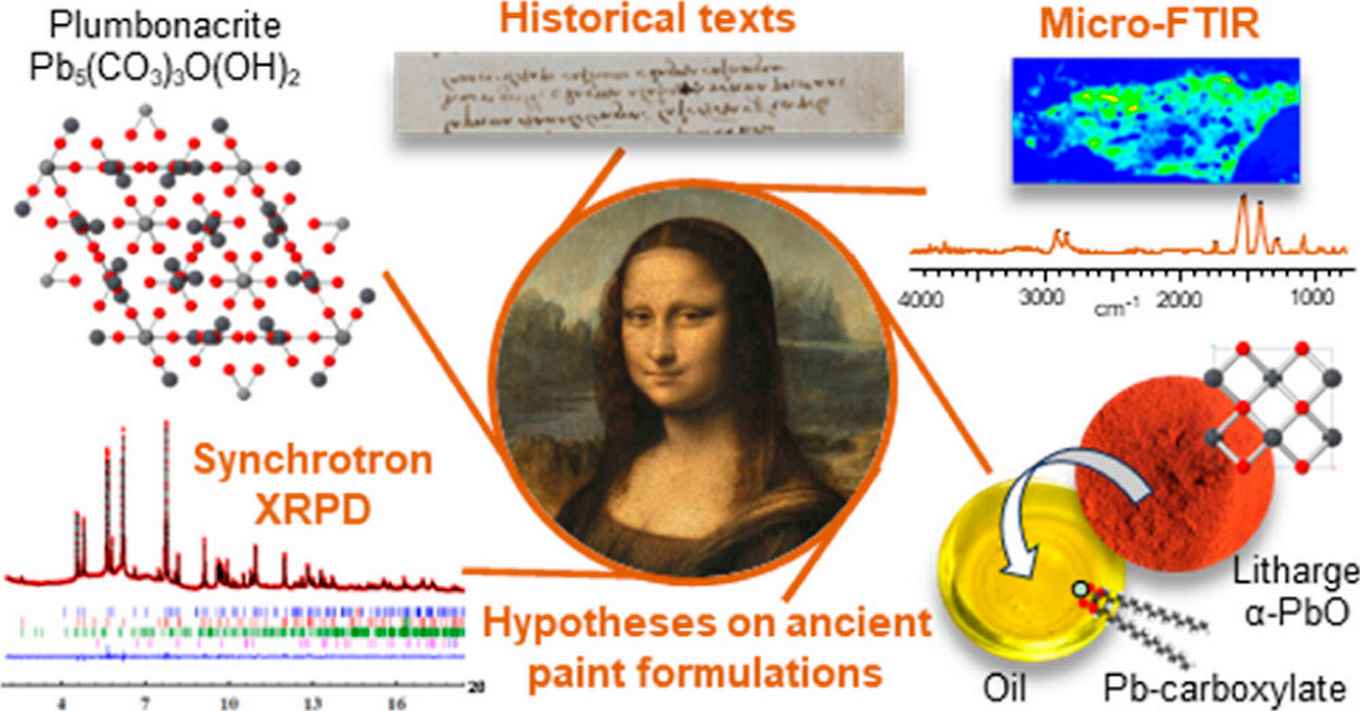Shedding light on Leonardo’s painting methods
26 October 2023

The rare and unstable component, called plumbonacrite, was identified by an international research team investigating samples of Da Vinci’s masterpieces at ESRF, the European Synchotron in Grenoble (France). It had been seen before in Rembrandt’s masterpiece The Night Watch, painted two centuries after the Mona Lisa and the Last Supper. This enabled the scientists to identify possible hypothesis to explain its presence, despite the chronological differences between Da Vinci and Rembrandt.
Manuscripts and model samples
In particular, the plumbonacrite seemed the result of a specific mix of oil with a particular lead oxide. To further explore this possibility, Fazlic and colleagues analysed the manuscripts and translations of Leonardo's recipes. This was rather difficult since Leonardo’s descriptions contain terminology that is not easily understood, and because of the difference between terms used by painters and by chemists. Eventually, they found the referral to a particular chemical compound in one of Da Vinci’s recipes. This lead(II)oxide was mentioned in the context of a pharmaceutical practice, but he may also have used it in paintings.
To further substantiate this, Fazlic prepared model samples following the historical treatises, and investigated their ageing. “It added very nicely to the topic of my PhD project”, she says, “where I investigate the short- and long-term reactions of historical driers and binders.” The results of her studies helped greatly to derive a final conclusion on the preparatory build-up of Mona Lisa, for which Da Vinci used a thick and opaque ground layer, and explain the occurrence of the plumbonacrite.
Publication details:
Victor Gonzalez, Gilles Wallez, Elisabeth Ravaud, Myriam Eveno, Ida Fazlic, Tiphaine Fabris, Austin Nevin, Thomas Calligaro, Michel Menu, Vincent Delieuvin, and Marine Cotte: X-ray and Infrared Microanalyses of Mona Lisa’s Ground Layer and Significance Regarding Leonardo da Vinci’s Palette. J. Am. Chem. Soc., Publication Date: October 11, 2023. DOI: 10.1021/jacs.3c07000
See also
- ESRF news: Scientists uncover a rare component in Da Vinci’s Mona Lisa paint
- Ida Fazlic wins 3MT competition